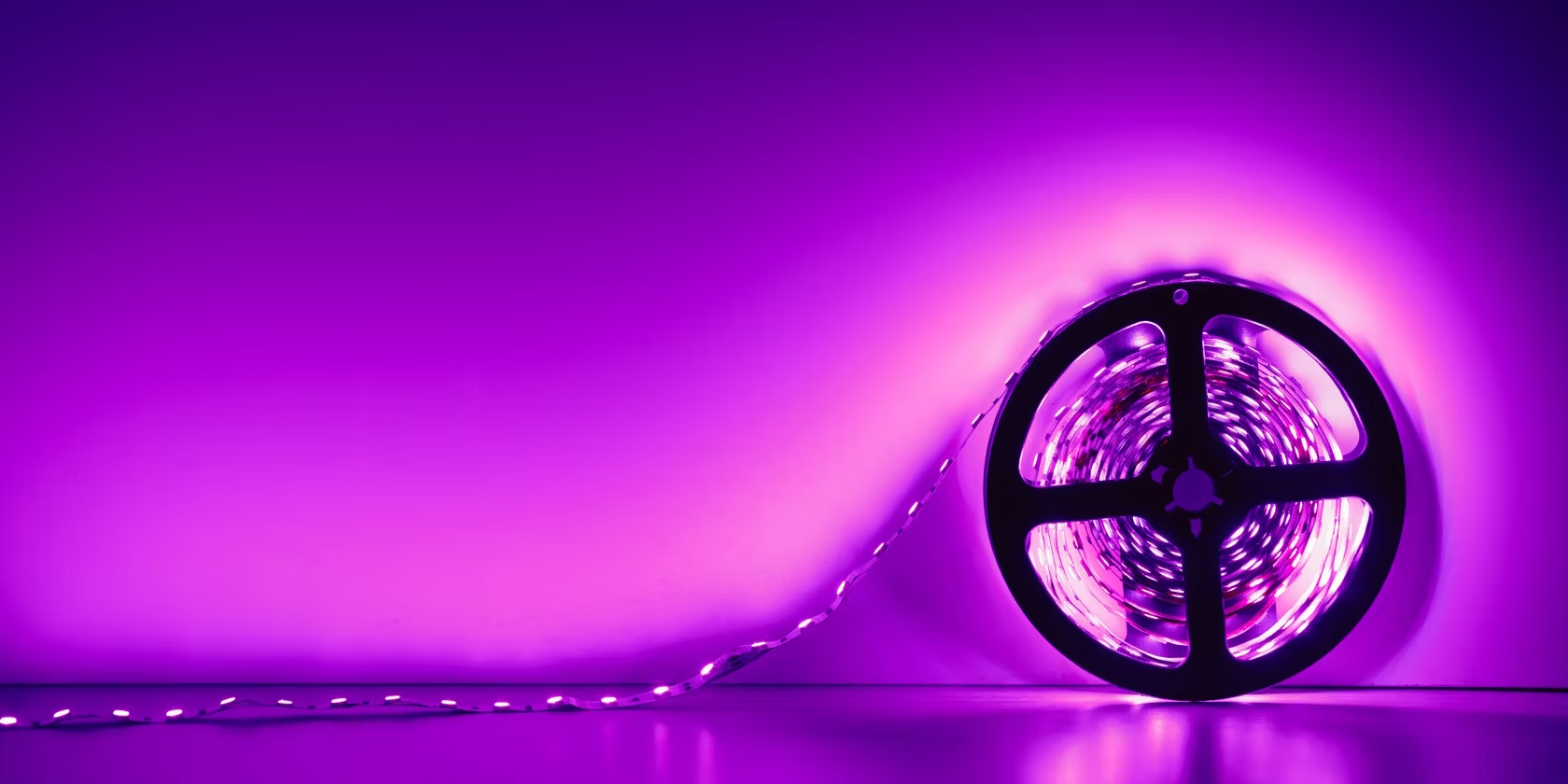Science
How I Sleep at Night Knowing I’m Failing All My Classes – Tymoff

Science
Dimmable LED Flash: A Comprehensive Guide

Introduction
Dimmable LED flashes have become a popular lighting solution in homes, offices, and commercial spaces. They offer flexibility, energy savings, and enhanced lighting control. Unlike traditional lighting options, dimmable LED lights allow you to adjust brightness levels based on your needs. Whether it’s creating a cozy atmosphere in your living room or optimizing lighting for a workspace, dimmable LED flash can do it all.
In this guide, we’ll dive into everything you need to know about dimmable LED flash. We’ll explore its benefits, how it works, key features to consider, and how to choose the best options for your needs. We’ll also address common questions to help you make an informed decision. Let’s get started!
What Is a Dimmable LED Flash?
A dimmable LED flash is a type of LED light that allows you to control its brightness. Using a dimmer switch, you can easily increase or decrease the light intensity without changing the light’s color. This offers greater control over the environment, making these lights ideal for various settings, from cozy living rooms to bright office spaces. Click Here
LED stands for Light Emitting Diode, which is known for its efficiency. The dimmable feature adds another level of versatility, letting you use one light for multiple purposes.
How Does a Dimmable LED Flash Work?
Dimmable LED flashes work with a special dimmer switch that regulates the amount of electrical current reaching the LED bulb. Traditional dimmers simply reduce the amount of electricity flowing to the bulb, but LED technology is a bit more complex. LEDs require a consistent current to function properly, so when using a dimmer, the circuit adjusts the electrical pulse, reducing brightness without affecting the light’s performance. Science Blog
Benefits of Dimmable LED Flash
1. Energy Efficiency
Dimmable LED flashes consume less power than traditional bulbs, even when set at their highest brightness. When you reduce the brightness, the energy consumption drops even further, helping you save on electricity bills.
2. Longer Lifespan
LEDs are known to last significantly longer than incandescent or fluorescent bulbs. The dimmable feature can extend their lifespan even more, as running the light at lower brightness levels reduces wear on the components.
3. Adjustable Ambiance
One of the biggest advantages of dimmable LED flash is the ability to create different moods. Whether you want bright light for working or soft, dim lighting for relaxing, these lights can do it all with a simple adjustment.
4. Better Eye Comfort
Harsh lighting can cause eye strain, especially in environments where you need to focus for long periods. Dimmable LEDs allow you to reduce brightness to a comfortable level, which is better for your eyes and helps prevent headaches.
5. Versatility
These lights are suitable for a wide range of applications, from residential to commercial. You can use them in living rooms, offices, restaurants, and even outdoor spaces, making them highly versatile.
Key Features to Consider When Buying Dimmable LED Flash
When shopping for dimmable LED flash, it’s important to keep a few features in mind:
1. Brightness Levels (Lumens)
The brightness of an LED is measured in lumens, not watts. Make sure to choose a bulb that offers the right amount of light for your space. Higher lumens mean brighter light.
2. Compatibility with Dimmer Switches
Not all dimmable LED flashes are compatible with all dimmer switches. Ensure that the LED light you choose works with your existing switch, or purchase a compatible dimmer switch.
3. Color Temperature
LEDs come in various color temperatures, ranging from warm (soft white) to cool (daylight). Choose a temperature that suits your space and purpose.
4. Energy Efficiency (Watts)
Look for bulbs with a low wattage but high lumen output for maximum energy efficiency.
5. Lifespan
Check the estimated lifespan of the bulb. LED bulbs typically last anywhere from 15,000 to 50,000 hours, depending on the quality.
Common Applications for Dimmable LED Flash
Dimmable LED flash is used in many settings, such as:
- Residential Lighting: Perfect for living rooms, bedrooms, and kitchens where varying light levels are needed.
- Offices: Helps reduce glare on screens while still providing enough light for productivity.
- Restaurants and Cafés: Dimmable lighting creates a cozy and relaxing ambiance for customers.
- Home Theaters: Use dimmable LEDs to enhance your home theater experience by controlling the lighting levels.
- Outdoor Lighting: Ideal for patios or gardens where you may want softer light in the evening.
How to Install a Dimmable LED Flash
Installing a dimmable LED flash is relatively simple and can be done in a few steps:
- Choose the Right Bulb
Ensure that the bulb is dimmable and matches the brightness and color temperature you need for the space. - Install the Dimmer Switch
If you don’t already have a compatible dimmer switch, you’ll need to install one. This typically requires some basic wiring skills, or you can hire an electrician. - Test the System
Once the bulb and dimmer switch are installed, test the system to make sure the light dims smoothly. If the light flickers or doesn’t dim correctly, you may need to check for compatibility issues between the bulb and the switch.
FAQs About Dimmable LED Flash
1. Can I use a regular dimmer switch with a dimmable LED flash?
No, regular dimmer switches are not designed for LEDs. Make sure you use a dimmer switch that is compatible with LED lighting.
2. Do dimmable LED lights save energy?
Yes, dimmable LED lights save energy by using less electricity when dimmed. Even at full brightness, they are more energy-efficient than traditional bulbs.
3. Why do my dimmable LED lights flicker?
Flickering usually occurs when the dimmer switch is not compatible with the LED light. It’s important to use a dimmer that is specifically designed for LEDs.
4. Can I use dimmable LED flashes outdoors?
Yes, as long as the LED bulb is rated for outdoor use and is installed in a weatherproof fixture.
5. How long do dimmable LED flashes last?
Most dimmable LED bulbs last between 15,000 to 50,000 hours, depending on usage and quality.
Table: Comparison of Dimmable LED Flash Features
| Feature | LED Bulbs (Dimmable) | Incandescent Bulbs | Fluorescent Bulbs |
|---|---|---|---|
| Energy Efficiency | High | Low | Medium |
| Lifespan (hours) | 15,000 – 50,000 | 1,000 | 7,000 – 15,000 |
| Heat Emission | Low | High | Medium |
| Brightness Control | Yes (with dimmer) | Yes (with dimmer) | Limited |
| Color Options | Multiple (Warm to Cool) | Warm (Yellowish) | Cool (Bluish) |
| Cost | Higher upfront, cheaper long-term | Low upfront, higher long-term | Medium upfront |
Tips for Choosing the Right Dimmable LED Flash
- Check Compatibility: Always verify that the bulb and dimmer switch are compatible.
- Pick the Right Color Temperature: For relaxing spaces, choose a warm white. For work areas, daylight or cool white is ideal.
- Consider Lumens: Ensure the bulb provides enough brightness for the room size.
- Look for Energy Star Certification: Energy Star-rated bulbs are highly efficient and reliable.
Conclusion
Dimmable LED flashes are an excellent investment for anyone looking to save energy, improve ambiance, and enjoy better lighting control. With many options available, it’s important to choose the right bulb based on your needs, whether it’s for your home, office, or outdoor area.
By considering factors like brightness levels, compatibility, and energy efficiency, you can select the best dimmable LED flash for your space. Hopefully, this guide has given you a clear understanding of what to look for and why dimmable LED lighting is a smart choice for your lighting needs.
FAQs Recap
- Can I use a regular dimmer switch with a dimmable LED flash? No.
- Do dimmable LED lights save energy? Yes.
- Why do my dimmable LED lights flicker? Compatibility issue.
- Can I use dimmable LED flashes outdoors? Yes.
- How long do dimmable LED flashes last? 15,000 to 50,000 hours.
By following this guide, you’ll be well-equipped to make an informed decision when buying and using dimmable LED flashes.
-

 Business2 months ago
Business2 months agoNippyFiles: The Complete Guide to Downloading and Sharing Files
-

 Celebrity7 months ago
Celebrity7 months agoSean Kaufman Ethnicity, Wiki, Age, Career And More
-

 Sports2 months ago
Sports2 months agoArcenturf Gagnant: Your Ultimate Guide to Smart Turf Betting
-

 Tech3 months ago
Tech3 months agoWhat is Proxiyum? A Complete Guide to Web Proxy Services
-

 entertainment2 months ago
entertainment2 months agoHD Hub 4u: Your Ultimate Guide to Free Movie Downloads
-

 Celebrity7 months ago
Celebrity7 months agoJack Champion Height, Biography, Wiki, Age, Career And More
-

 Celebrity7 months ago
Celebrity7 months agoDerek Lipp Wealth: What Is His Net Worth in 2023?
-

 Celebrity7 months ago
Celebrity7 months agoWho Is Jennifer Hermoso Partner? Bio, Wiki, Age, Career, Net Worth And More

